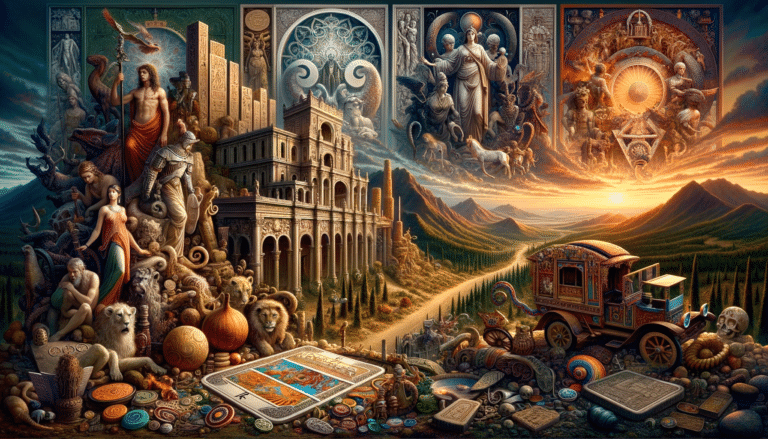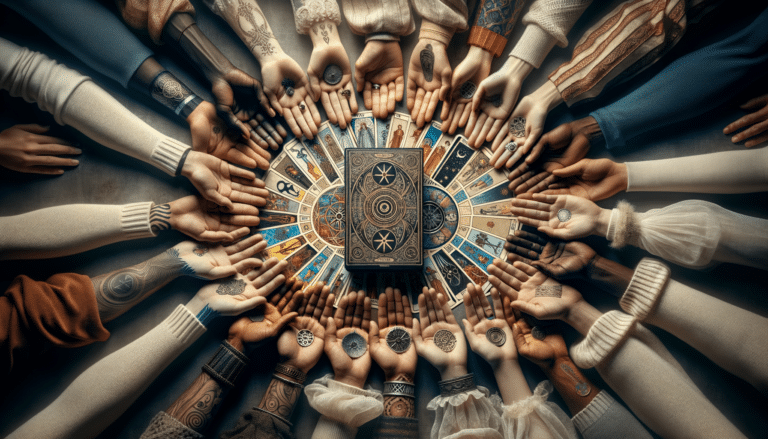The Role of Tarot in Occult History
As you sift through the sands of time, you’ll find that tarot cards are the bedrock upon which much of occult history stands. Their origins are shrouded in mystery, fostering a sense of the arcane from the very outset.
You’ll see how tarot’s rich symbolic language offers a mirror to the subconscious, making it an invaluable tool for divination and self-reflection. And role of tarot in occult history is an important one…
During the Renaissance, you’d witness tarot’s fusion with hermetic traditions and ceremonial magic, cementing its place in esoteric practices.
And as you approach the modern era, you’ll understand how the occult revival breathed new life into these enigmatic cards, ensuring their pivotal role in contemporary mystical explorations.
Tarot’s journey through the ages is a testament to its enduring allure and profound significance in the tapestry of occult history.
Key Takeaways
- Tarot cards have a long and rich history, originally used as playing cards in Europe before becoming associated with mysticism and divination.
- The symbolic language of tarot is made up of archetypal images and allegories, which hold multiple meanings shaped by cultural context and intuitive interpretation.
- Tarot cards have been used as tools for divination, unlocking mystical philosophies, and personal transformation throughout history, particularly during the Renaissance and in Hermetic traditions.
- Tarot has experienced a modern occult revival, with a resurgence of interest in esoteric practices and the use of tarot as a medium for personal growth and understanding.
The Origins of the Cards and the Role of Tarot in Occult History
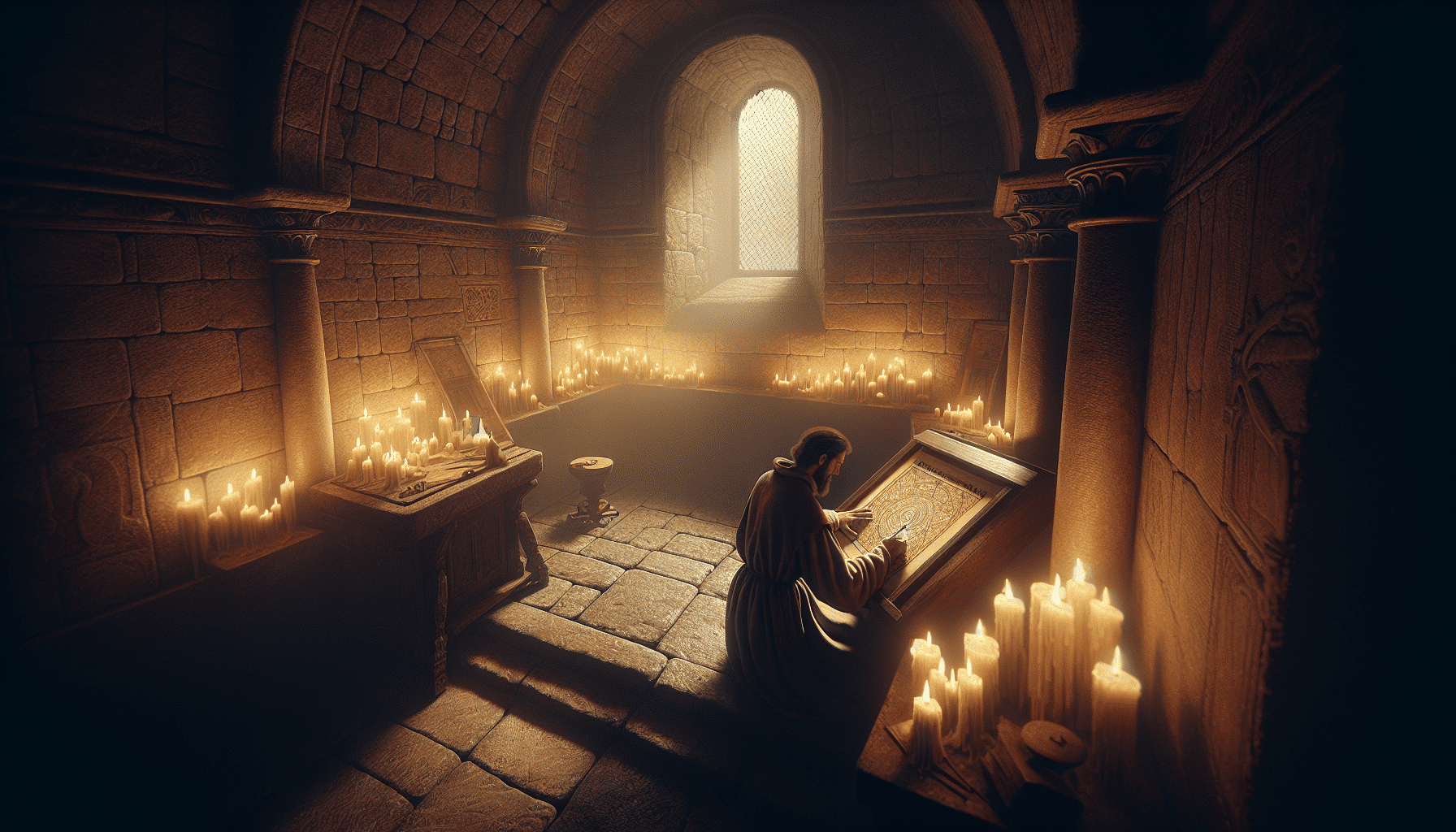
You’ll find that every tarot deck comprises 78 cards, each brimming with symbolic imagery that dates back to the mid-15th century. The card origins are as fascinating as they’re enigmatic, beginning as playing cards in Europe, which were used for games like Italian tarocchini and French tarot. It wasn’t until the late 18th century that tarot cards became associated with mysticism and divination.
As you delve deeper, you’ll discover a heated divination debate surrounding tarot cards. Skeptics argue that their use in fortune-telling is nothing more than a parlour trick, while enthusiasts believe tarot cards hold the keys to understanding the unconscious mind and the unseen forces that shape our lives. This debate has raged for centuries, with the cards’ mysterious symbols often being the centre of the argument.
The tarot’s intricate art and hidden meanings continue to captivate those seeking insight, transcending their original purpose. Whether as tools for self-reflection or mystical portals, the legacy of tarot cards is undeniable. They’re more than just pieces of paper; they’re a bridge to the past and a mirror reflecting personal journeys.
Tarot’s Symbolic Language
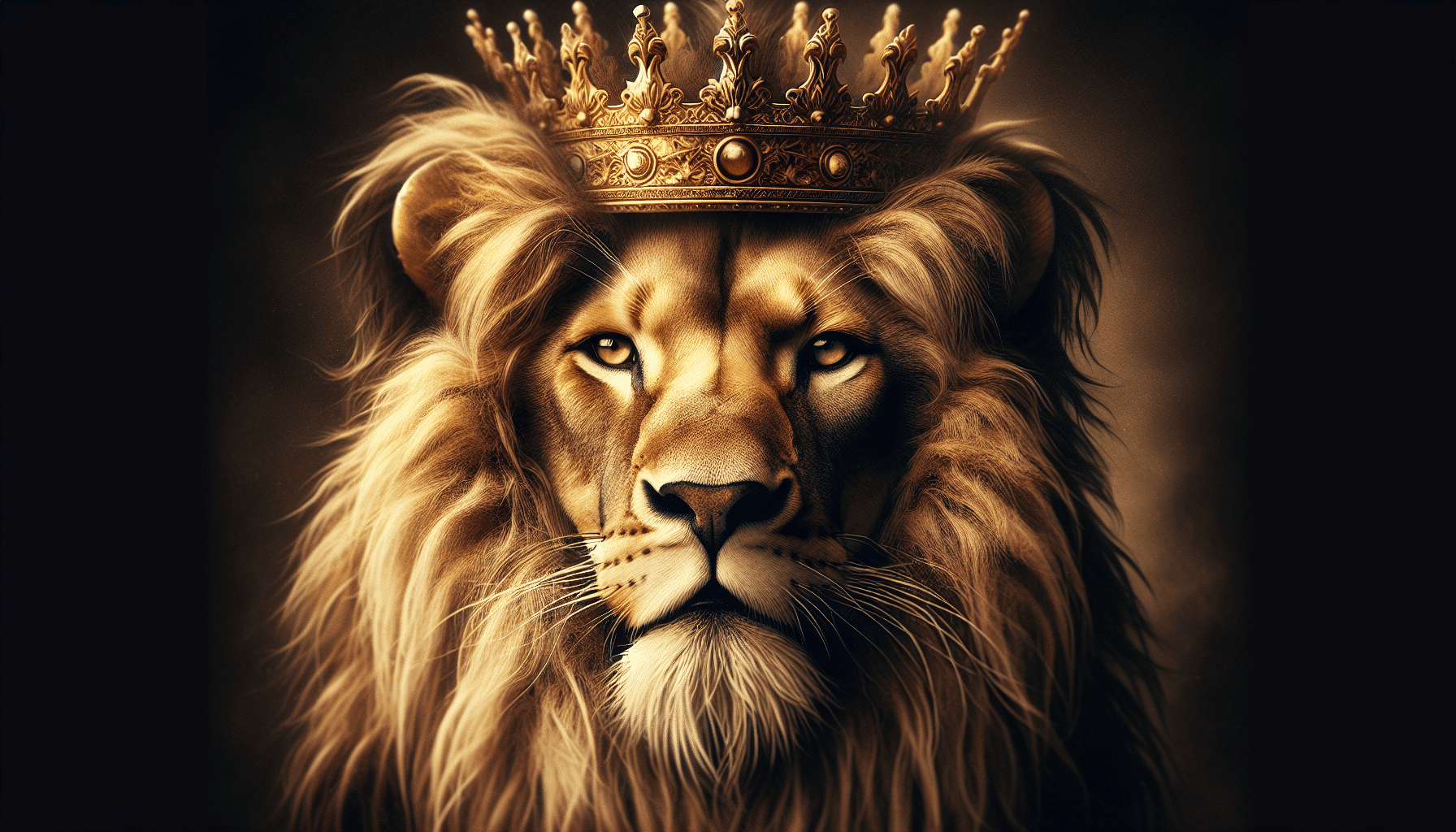
Delving into tarot’s symbolic language, you’ll encounter a rich tapestry of archetypal images and allegories that have contributed to its pivotal role in occult history. The cards serve as more than mere pictures; they’re a form of symbolic divination that communicates through an intricate system of ancient symbols and themes.
To grasp the essence of tarot’s enigmatic allure, consider these facets:
– Arcane Archetypes
– The Fool: Embodies innocence and the spirit of adventure, representing new beginnings.
– The Lovers: Symbolizes relationships and choices, often reflecting matters of the heart.
– Death: Contrary to popular belief, signifies transformation and change rather than physical demise.
Each card in a tarot deck holds a multitude of meanings, shaped by cultural context and intuitive interpretation. It’s not just about the images, but how they interconnect to weave a story during a reading. Their power lies in the ability to mirror the human experience, from the mundane to the mystical.
Check out our Tarot Decks & Oracle Cards here…
Tarot in Renaissance Magic

In the midst of Renaissance magic, you’ll find that tarot cards weren’t only tools for divination but also keys to unlocking the era’s mystical philosophies and esoteric practices. Renaissance symbolism, with its rich allegories and emblematic art, permeated the tarot, making each card a complex repository of knowledge. These cards served as conduits between the material world and the metaphysical, offering those who understood their language a way to glimpse the divine plan.
As you delve into the world of Renaissance divinatory practices, you’ll see that tarot was more than a parlor game. It was an integral part of the magical toolkit. Scholars and magicians alike employed the tarot in various ways – some used the imagery for meditation and spiritual ascent, while others saw the cards as a means to forecast potential outcomes and navigate through life’s uncertainties.
Learn more with these best tarot books here…
Tarot and Hermetic Traditions
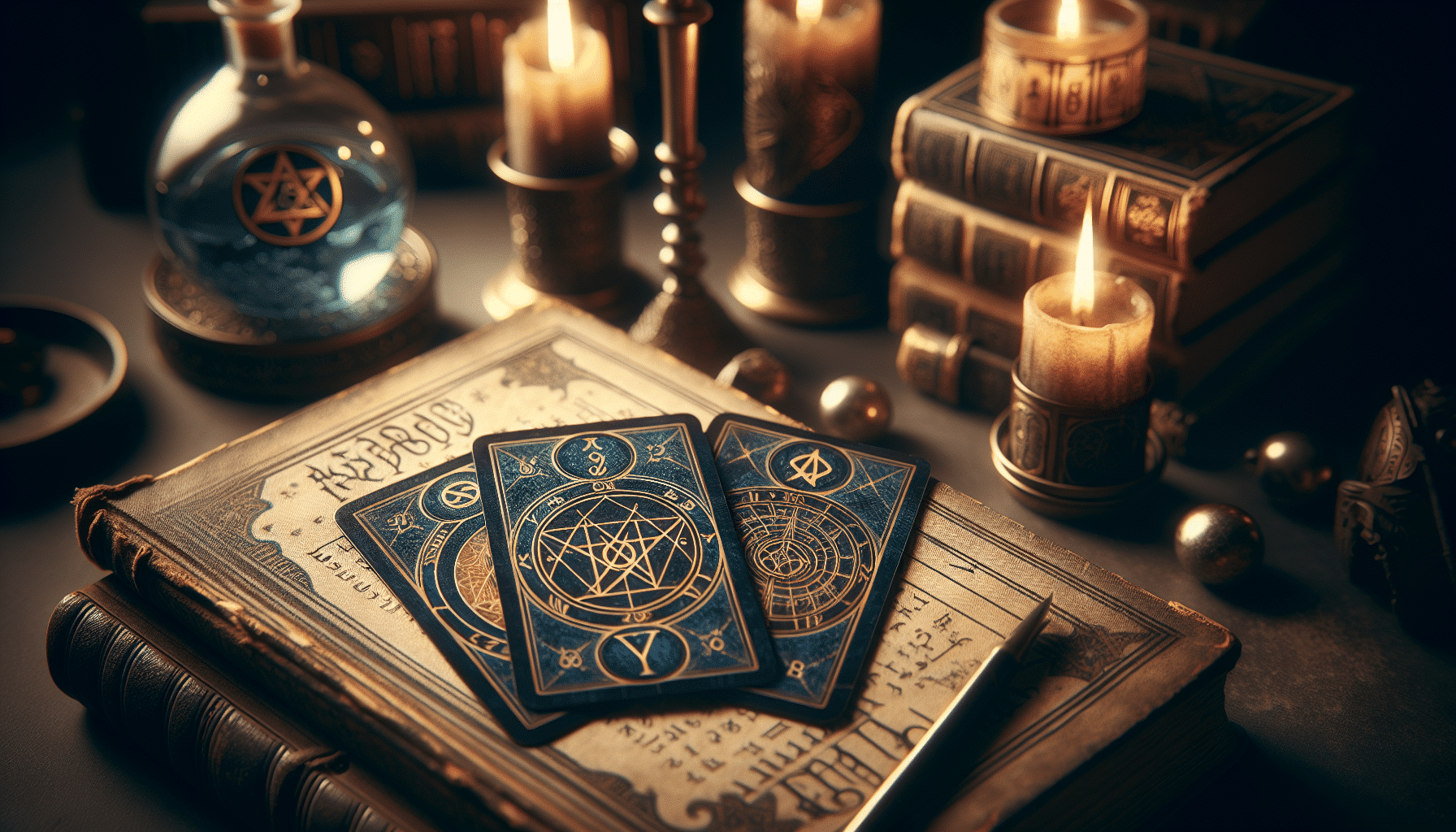
The Hermetic tradition’s embrace of tarot cards further cemented their role as instruments of occult knowledge and cosmic insight. You’re diving into a world where the melding of esoteric practices and arcane archetypes unfolds in the intricate imagery of the tarot deck. This synergy isn’t just happenstance; it’s a deliberate intertwining of ancient wisdom with the perennial quest for understanding the universe.
-
Hermeticism and Tarot:
The Hermetic tradition sees tarot as a pictorial expression of universal truths and a tool for personal transformation. By contemplating the cards, you’re not just predicting your future; you’re engaging with a tradition that sees the pursuit of knowledge as a sacred path. -
Symbolism:
Each card is a repository of esoteric symbols, aligning with Hermetic principles like ‘As above, so below.’ The symbolism in the tarot deck provides a visual language to explore the interconnectedness of the macrocosm and the microcosm. -
Alchemy:
The transformative journey depicted in the Major Arcana mirrors alchemical processes of turning the base (mundane) into the golden (enlightened). The tarot cards can be seen as a guide through the alchemical stages of spiritual growth and self-realization. -
Astrology:
The cards correspond to astrological elements, offering a celestial map to guide one’s spiritual journey. The tarot deck integrates astrological symbolism, enabling practitioners to explore the influence of the stars and planets on their personal development.
Learn even more secrets of history of tarot cards here…
Modern Occult Revival of Tarot
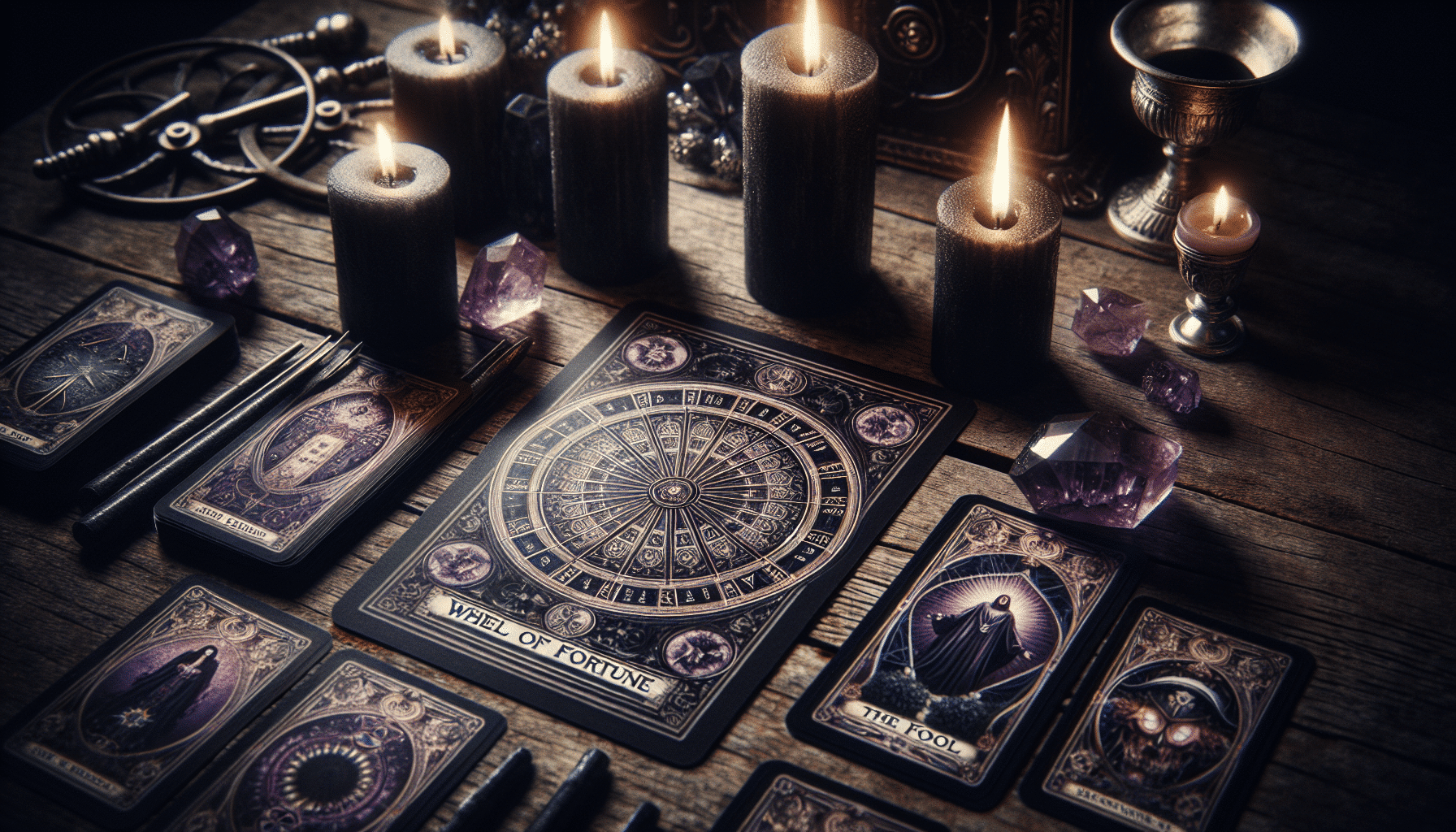
With the resurgence of interest in esoteric practices, you’ve witnessed tarot’s transformation into a key tool for modern occultists seeking to connect with the spiritual realm. The cards serve as a conduit to the unconscious, with card symbolism offering a rich tapestry of meanings that resonate on multiple levels. Each image, number, and color carries significance, providing a nuanced language through which you can interpret the metaphysical messages they convey.
You’re likely familiar with the Rider-Waite-Smith deck, its imagery having permeated popular culture. It’s one of the most accessible entry points into the world of tarot, offering clear representations of archetypal figures and situations. As you delve deeper into tarot’s mysteries, you encounter a myriad of divination methods, each with its own approach to harnessing the cards’ insight. Whether it’s through the Celtic Cross spread, exploring past, present, and future, or more elaborate layouts designed for specific queries, you have the means to unlock guidance and self-reflection.
As tarot continues to thrive in the modern occult landscape, it’s not just a tool for prediction but a powerful medium for personal growth and understanding. The cards invite you to look within, transforming the act of reading into a deeply spiritual experience.
Conclusion
As you’ve journeyed through the enigmatic tapestry of tarot’s history, you’ve seen how its cards became keys to the arcane. They’ve danced through the ages, whispering secrets in the language of symbols, intertwining with Renaissance magic and Hermetic wisdom.
Now, they reach out to you, a timeless conduit in the modern mystic’s quest. Let the tarot’s legacy be a lantern in the shadowed corridors of the esoteric, guiding your soul’s exploration of the unseen.
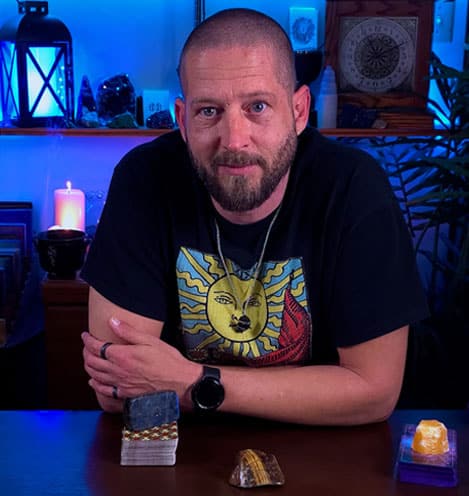
About The Author – Allen Hill
Allen Hill, the force behind Unknown Truth Tarot, has a YouTube following 6-times bigger than the population of his hometown, Miamisburg, Ohio. From his spiritually rich blog on Tarot and crystals to his role as CEO of The Unknown Truth Tarot Metaphysical Shop, Allen’s passion for the metaphysical shines through.
A master Tarot reader and “crystal junkie,” Allen is also a devoted dad to Dylan, 10, and Destiny, 24. When he’s not immersed in the world of Tarot and crystals, he enjoys poker and video gaming sessions, often humorously outplayed by Dylan.
Follow Allen on Twitter, Instagram, Facebook, TikTok, and subscribe to his Unknown Truth Tarot YouTube channel to join him on a journey of spiritual growth and self-discovery.

